Info
Subfamily: Panicoideae
Genus etymology: Ischaemum = "to stop bleeding" [Greek] referencign supposed medical uses
Species etymology: aristatum = "possessing a bristle" [Latin] refering to the awned lemmas
Photosynthetic type: C4 (warm season)
Nativity: naturalized - accidental
First recorded in Hawaiʻi: 1994
Map
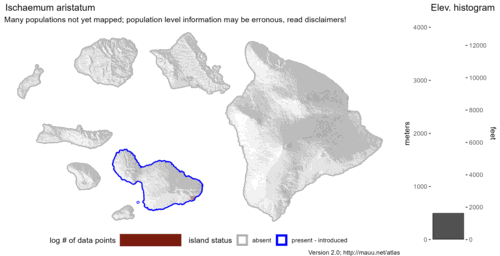
Inflorescence
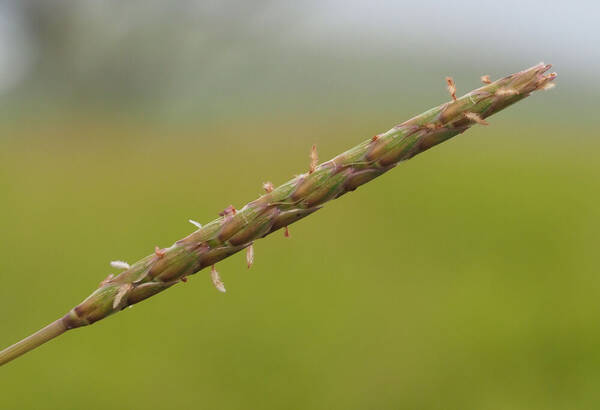
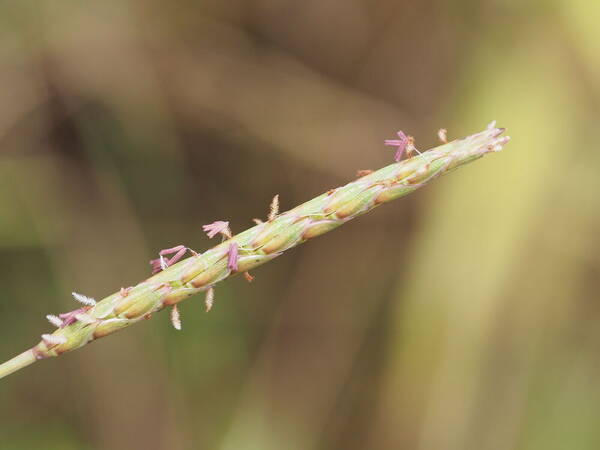
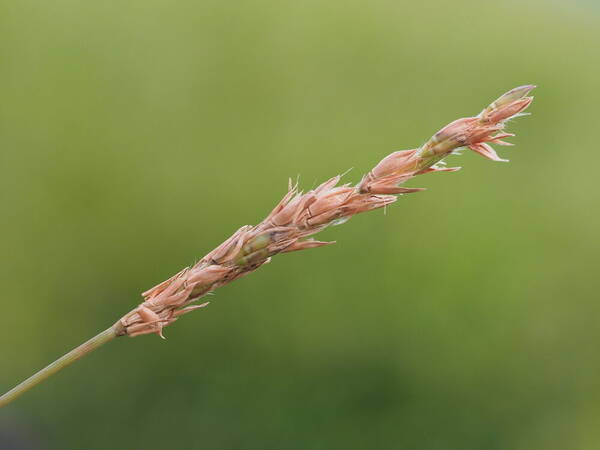
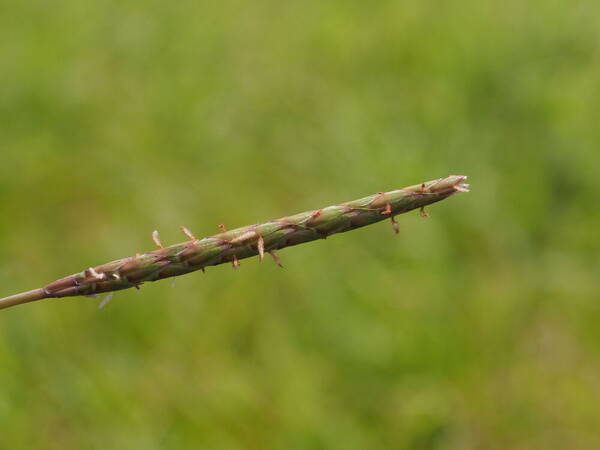
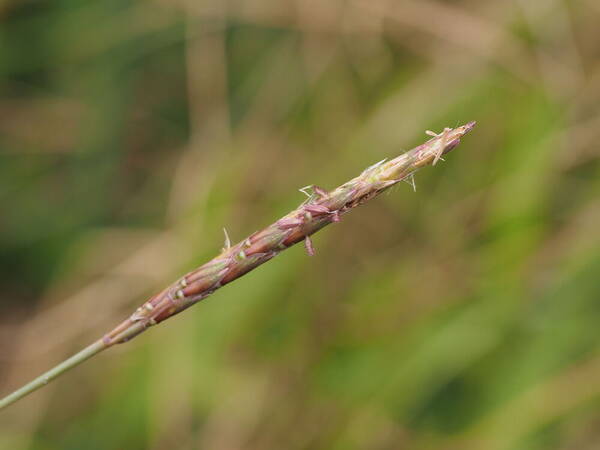
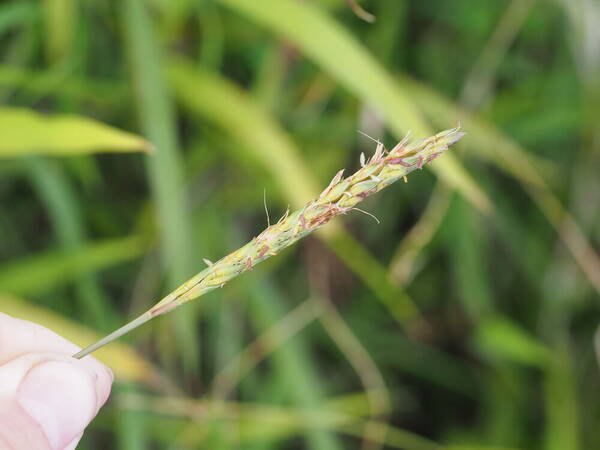
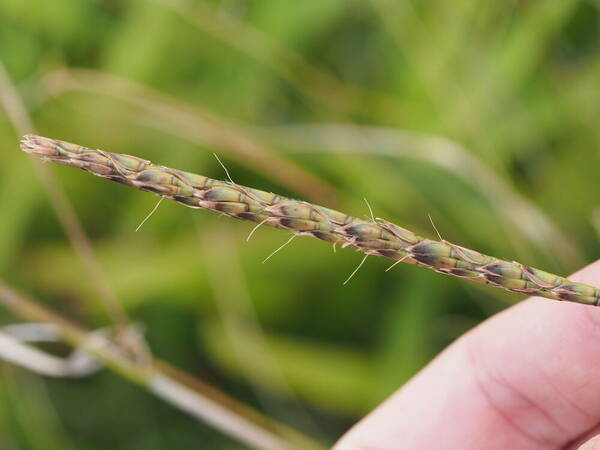
Plant
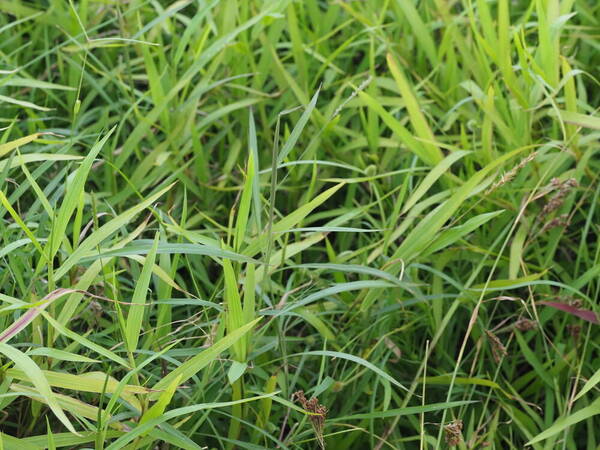
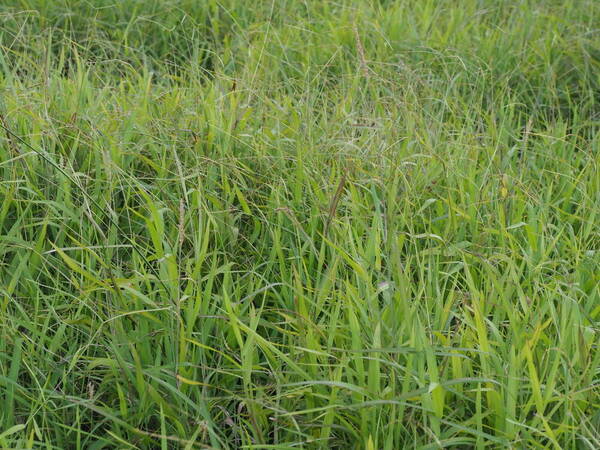
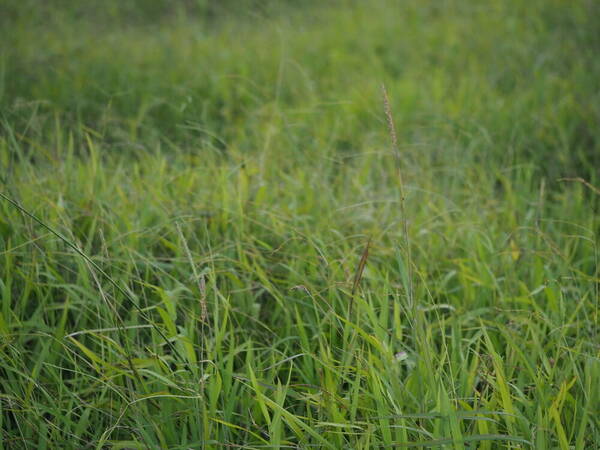
Spikelets
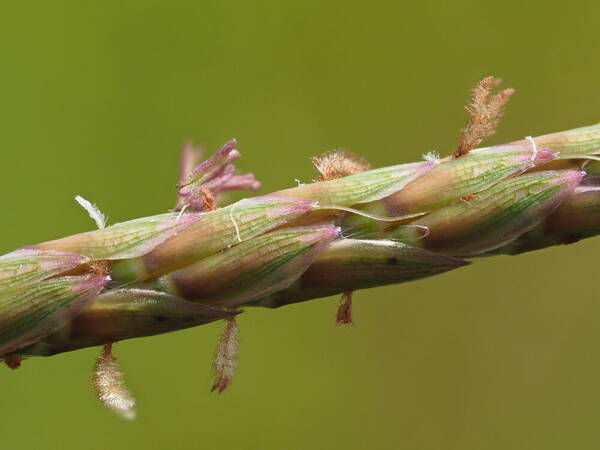
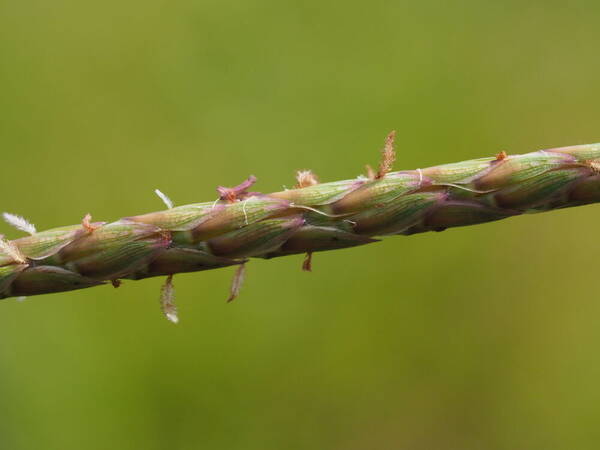
Node
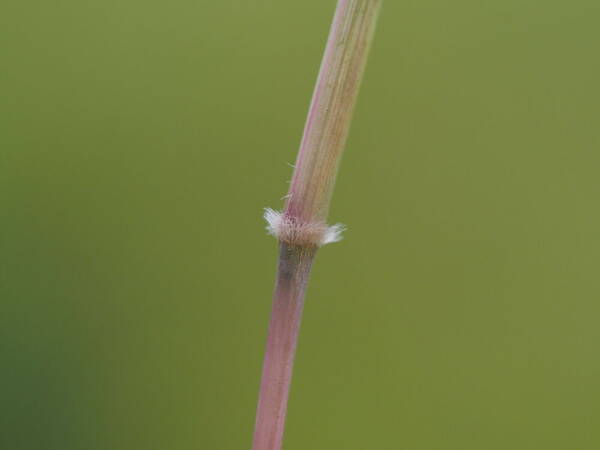
Description
Perennial. Culms loosely tufted, erect or geniculately ascending, 40–80 cm tall, simple or branching, nodes glabrous. Leaf sheaths glabrous or pilose; leaf blades linear lanceolate, 5–25 × 0.4–1 cm, glabrous or thinly pilose, margins smooth becoming scabrid toward apex, base attenuate or contracted, apex acuminate; ligule 2–3 mm. Racemes terminal, paired, appressed back to back, 4–7 cm; rachis internodes clavate, triquetrous, scabrid or ciliate along outer angle, inner angles glabrous or shortly ciliate. Sessile spikelet oblanceolate to obovate, 5.5–8 × 2–2.3 mm; lower glume leathery with rounded flanks below middle, herbaceous, broader and 2-keeled above, 5–7-veined, keels narrowly to broadly winged, wing margin scabrid; upper lemma awnless or shortly awned; awn well developed or imperfect, up to 1.2 cm. Pedicelled spikelet dorsally compressed, resembling sessile, asymmetrical, 2-keeled, keels winged, one wing incurled. Fl. and fr. Jul–Oct. 2n = 56, 72.
(Description source: Wu, Z.Y., Raven, P.H. & Hong, D.Y. (eds.). 2006. Flora of China. Volume 22. Poaceae. Missouri Botanical Garden Press, St. Louis. 733 pp. )
Habit Perennial; caespitose; clumped loosely. Rhizomes short. Culms decumbent, or prostrate; 30-80 cm long; 1.2-2 mm diam. Culm-internodes terete, or channelled; 4-12(-25) cm long; smooth; distally glabrous. Culm-nodes glabrous, or pubescent. Lateral branches lacking, or sparse; arising from lower culm. Leaves cauline. Leaf-sheaths outer margin glabrous, or hairy. Ligule an eciliate membrane; 3-4 mm long; scarious; brown; truncate. Leaf-blades linear, or lanceolate; 5-30 cm long; 4-10 mm wide. Leaf-blade surface glabrous, or pilose; sparsely hairy. Leaf-blade margins smooth, or scabrous. Leaf-blade apex acuminate. Inflorescences Inflorescence composed of racemes. Racemes 2; paired; appressed back to back; 4-7 cm long; 5-8 mm wide. Rhachis fragile at the nodes; angular; scaberulous on margins; glabrous on margins, or pubescent on margins. Rhachis internodes columnar; 3-4 mm long; flat and forming a U or V shape with the pedicel in rear view. Rhachis internode tip transverse; cupuliform. Spikelets in pairs. Fertile spikelets sessile; 1 in the cluster. Companion sterile spikelets pedicelled; 1 in the cluster. Pedicels columnar; glabrous, or puberulous. Sterile Companion sterile spikelets well-developed; male; ovate; 4-6 mm long; shorter than fertile; separately deciduous. Companion sterile spikelet glumes chartaceous; keeled; muticous. Companion sterile spikelet lemmas 2; enclosed by glumes; muticous, or 1-awned; with 0-3 mm long awn. Spikelets Spikelets comprising 1 basal sterile florets; 1 fertile florets; without rhachilla extension. Spikelets obovate, or rhomboid; dorsally compressed; 5-8 mm long; 2-2.3 mm wide; falling entire; deciduous with accessory branch structures. Spikelet callus glabrous; base truncate; inserted. Companion sterile spikelets well-developed; male; ovate; 4-6 mm long; shorter than fertile; separately deciduous. Companion sterile spikelet glumes chartaceous; keeled; muticous. Companion sterile spikelet lemmas 2; enclosed by glumes; muticous, or 1-awned; with 0-3 mm long awn. Fertile Spikelets comprising 1 basal sterile florets; 1 fertile florets; without rhachilla extension. Spikelets obovate, or rhomboid; dorsally compressed; 5-8 mm long; 2-2.3 mm wide; falling entire; deciduous with accessory branch structures. Spikelet callus glabrous; base truncate; inserted. Glume Glumes dissimilar; exceeding apex of florets; firmer than fertile lemma. Lower glume elliptic; 1 length of spikelet; coriaceous; much thinner above; 2-keeled; keeled above; keeled laterally; winged on keel; winged broadly; winged above; 5 -veined. Lower glume primary vein scabrous. Lower glume lateral veins obscure; with cross-veins; intercarinal veins distinct; intercarinal veins 3 in number. Lower glume surface convex. Lower glume apex dentate; 2 -fid. Upper glume lanceolate; 1 length of spikelet; coriaceous; 1-keeled; keeled above; 5 -veined. Upper glume primary vein scabrous. Upper glume apex acute. Florets Basal sterile florets male; with palea. Lemma of lower sterile floret ovate; hyaline; acute. Fertile lemma elliptic; hyaline; without keel. Lemma apex lobed; 2 -fid; awned; 1 -awned. Principal lemma awn from a sinus; straight, or geniculate; 1-10 mm long overall; clearly exserted from spikelet, or not or scarcely exserted from spikelet; without a column, or with twisted column. Palea 1 length of lemma. Flowers Anthers 3; 2.5 mm long. Distribution Africa: western Indian ocean. Asia-temperate: China and eastern Asia. Asia-tropical: India, Indo-China, Malesia, and Papuasia. Pacific: southwestern, northwestern, and north-central.
(Description source: Clayton, W.D., Vorontsova, M.S., Harman, K.T. and Williamson, H. (2006 onwards). GrassBase - The Online World Grass Flora. Available at https://powo.science.kew.org )